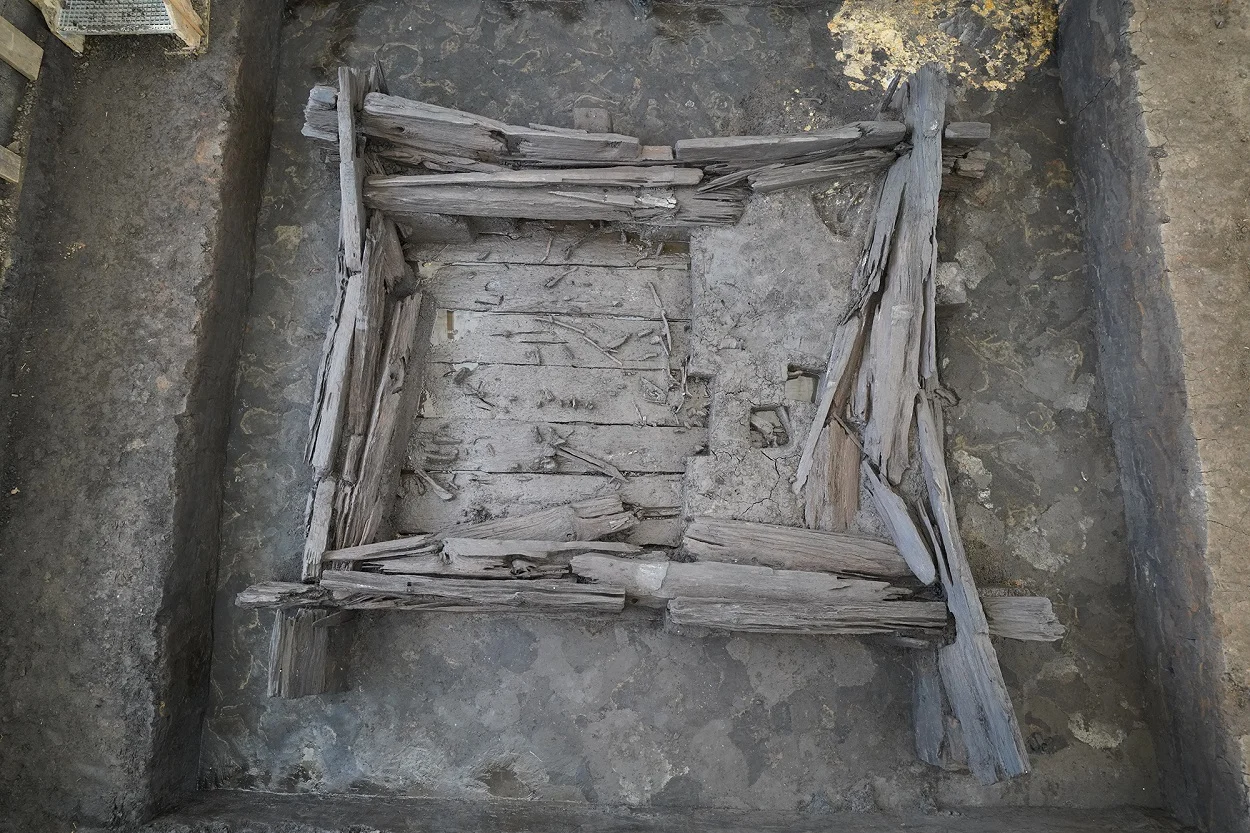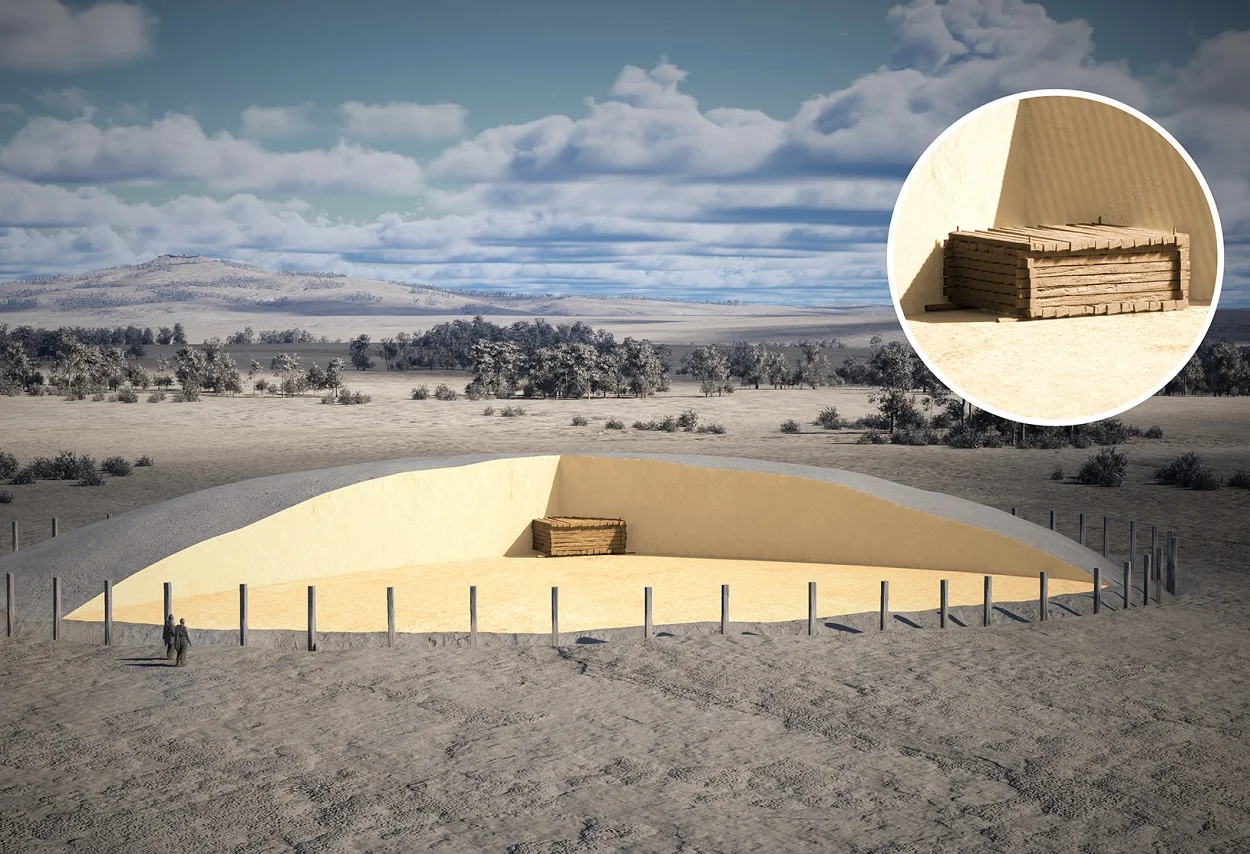Archaeologists from the State Office for Monument Preservation in the Stuttgart Regional Council (LAD) have uncovered a rare example of a preserved Iron Age chamber tomb during excavations in the Danube plain near Riedlingen, Germany.
The chamber tomb is situated at the centre of a large monumental burial mound that originally stood 6 metres tall with a diameter of 65 metres. According to the archaeologists, this type of mound belongs to the group of so-called princely burial mounds that was reserved for high-ranking elites in Celtic society between 620 and 450 BC.
“The newly discovered burial chamber is an outstanding testimony to our rich monument landscape. It is still completely intact 2,600 years after it was created,” said State Secretary in the Ministry for Regional Development and Housing in Baden-Württemberg Andrea Lindlohr MdL.
Excavations of the mound revealed a solid oak built wood chamber preserved at a depth of 70 centimetres beneath the surface The finding is quite unique in archaeology, as normally organic remains only survive for a few years or decades unless the soil conditions are waterlogged or contain high levels of alkaline that prevents microorganisms breaking down organic matter.
The chamber is approximately 3.40 metres wide by 4.05 metres in length, and oriented roughly north-south. Three oak planks placed upright make up each of the chamber walls and are interlocked at the corners.

The height of the chamber walls was approximately 1 metre, supporting a crossbeam inserted through the middle that held the weight of the ceiling which has since collapsed.
The exact dating of the oak timbers is yet to be completed. However, archaeologists used dendrochronology (tree ring analysis) to date a partially finished wooden spade found in situ, revealing that the wood used in its construction was felled around 585 BC.
Excavations found traces of two tunnels dug by ancient grave robbers, who likely plundered the tomb contents for grave goods made of metal or other valuable materials. Only examples of ceramics and decorative bronze nails have been left as discarded objects, which likely came from a four-wheeled cart, typical of other early Iron Age elite graves from the same period, such as the princely grave of Hochdorf.
Additional archaeological research is needed to determine whether the individual buried in the Riedlingen grave was male or female. So far, several well-preserved bones from a human skeleton have been recovered. An initial anthropological analysis suggests the remains belong to a male, approximately 15 to 20 years old and standing between 160 and 168 cm tall.
The President of the LAD, Prof. Dr. Claus Wolf, concluded: “All of the wood from the burial chamber will be carefully recovered and conserved and restored in the workshops of the State Office for Monument Preservation over the next few years in order to be able to present the completely reconstructed chamber to a broad public as a museum exhibit.”
Header Image Credit : Baden-Württemberg
Sources : Baden-Württemberg







